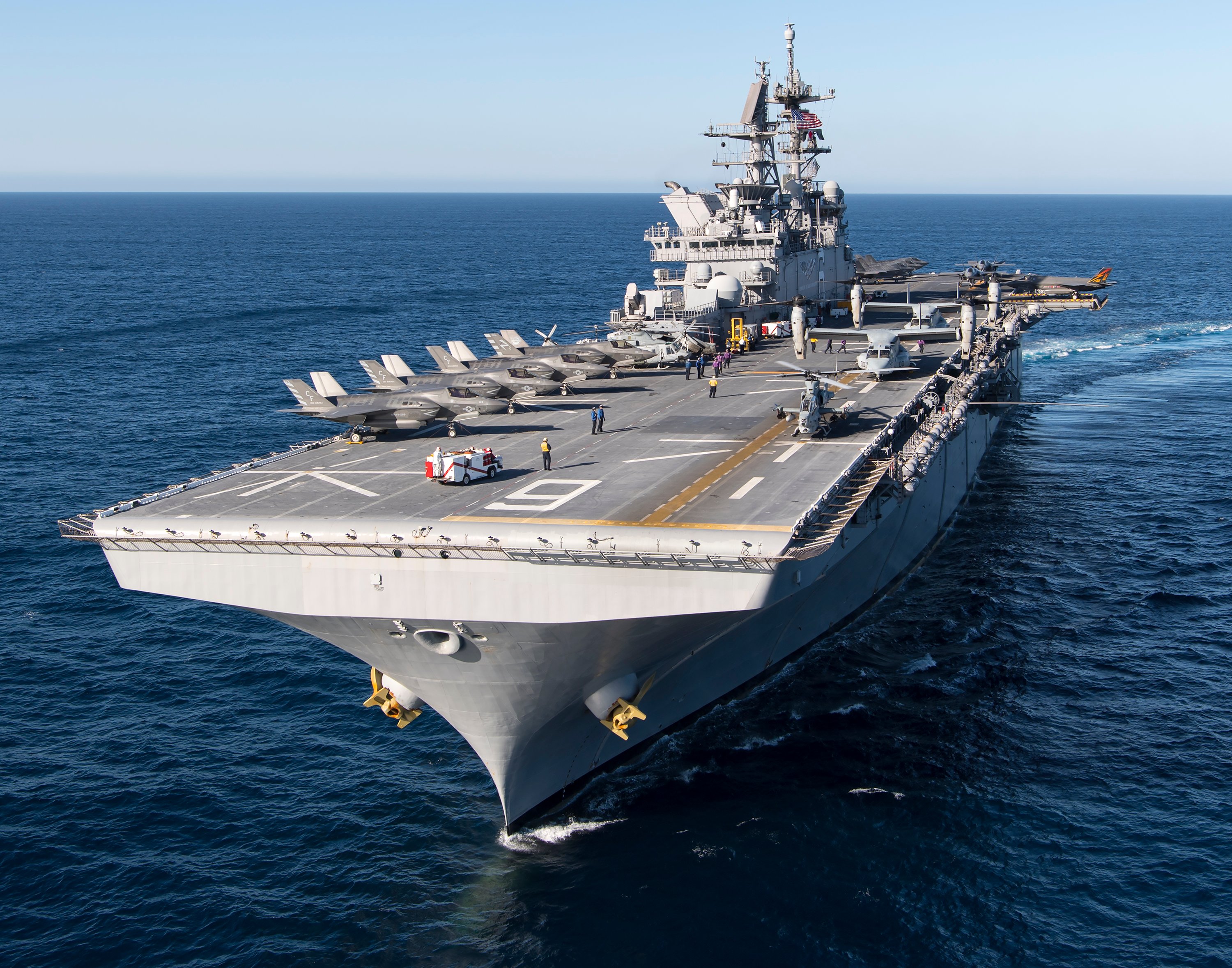China's first aircraft carrier, the Liaoning (PLAN CV-16). Source: Google Earth
China has an aircraft carrier.
In fact, multiple media sources confirm that China has already begun work on its second aircraft carrier, a sister ship to the Liaoning (PLAN CV-16), and likely to be designated CV-17.
What's more, People's Liberation Army Major General Luo Yuan has publicly stated that China's People's Liberation Army-Navy (PLAN) needs three aircraft carriers at a minimum, just to maintain parity with its neighbors. As the general explained: "India will have three aircraft carriers by 2014 and Japan will have three carriers by 2014, so I think the number (for China) should not be less than three." So it should come as no great surprise when we learn that China's race to build a blue water navy is now rounding the corner and heading for a third carrier build.
But here's something that may surprise you: This third Chinese carrier will probably be nuclear -- a 100,000-ton monster of a warship, equal in size, and perhaps in capability, to the Nimitz and Ford-class nuclear aircraft carriers built by Huntington Ingalls (HII +2.85%).

USS Nimitz (CVN-68) at sea. Photo: Wikimedia Commons
What does this news mean to America's military, to Huntington Ingalls, and to investors in Huntington and other defense contractors? Read on, and we'll lay it all out for you.
Welcome to the (nuclear) carrier club
Currently, 12 countries around the world possess aircraft carriers. (The exact number depends on what exactly you think constitutes an "aircraft carrier." For example, Japan's helicopter destroyer class of warship is only capable of carrying helicopters -- but China considers them aircraft carriers nonetheless). But so far, the only nuclear-powered aircraft carriers in the world, are those built by Huntington Ingalls for America.

Japan Maritime Self-Defense Force helicopter destroyer JS Hyuga (DDH 181). Photo: Wikimedia Commons
This gives the U.S. Navy a big advantage over its potential rivals in endurance, in range of operations, in speed, and in on-board power generation. But China is closing the gap quickly.
China's newest carrier is said to feature three aircraft elevators, the capacity to carry 75 or more warplanes, and electrically powered catapults to launch them. Word has it that the new ship will bear the hull number CVN-18 -- indicating it will be the second to be built after Liaoning (CV-16), and with the "N" designation, will be nuclear-powered.
At present, the new carrier's only incarnation is as a scale model making the rounds in China. But according to Richard Fisher, senior fellow at the International Assessment and Strategy Center, China could begin work on this third aircraft carrier at its Jiangnan-Changxin shipyard in Shanghai "very soon."
Money can't buy happiness -- but it can buy a lot of aircraft carriers
The shift in balance of power at sea, with U.S. influence waning and China in ascendant, has been dramatic. As recently as two years ago, China had no operable aircraft carriers. Now it has one-and-a-half, and a third on the way.
And while some may argue that China can't afford the expense of building nuclear supercarriers, the facts argue otherwise. According to data from the Stockholm International Peace Research Institute (SIPRI) in Sweden, China boasts an annual military budget in excess of $188 billion, making it the world's second biggest defense spender after the United States. And recently, Time put actual Chinese military spending at more than $200 million. So even if Colonel Li Jie at China's Institute of Naval Military Academy laments the high "about 5 billion U.S. dollars" cost of building a nuclear aircraft carrier -- this is a luxury that China's military can certainly afford.
What it means for investors
In the best case, Congress currently anticipates building new aircraft carriers for the Navy at the rate of one every five years. But America currently has only 10 of its federally mandated 11 aircraft carriers operational, and Secretary of Defense Chuck Hagel has publicly floated plans to cut that number to as little as "eight or nine."
Meanwhile, China is rapidly ramping its carrier construction, going from zero to three carriers operational, beginning construction, or entering the planning stages in just the past two years. All too rapidly, the "carrier gap" is closing.
Now, maybe this isn't a bad thing. After all, just this week, Chinese President Xi Jinping argued that it's time to "break the old pattern of conflict and opposition between great powers," and improve "cooperation between China and the U.S." If China intends to use its new carriers to promote freedom of trade in the South China Sea, and deliver aid to neighboring nations struck by earthquakes, tsunamis, and hurricanes -- as the U.S. often does -- then that's all well and good.
But if China's intentions are otherwise -- or if Congress even fears they may become so, and deems it prudent to maintain naval superiority in aircraft carriers -- then the U.S. simply must build more of them, and build them faster. For Huntington Ingalls, the last remaining nuclear aircraft carrier-builder in America, that can only mean good things.
The more and the bigger aircraft carriers China builds, the harder it's going to be for even would-be budget-cutters in Congress to cut back on spending to bulk up America's fleet.

Artist's depiction of the new Ford-class aircraft carriers. Source: Wikimedia Commons






